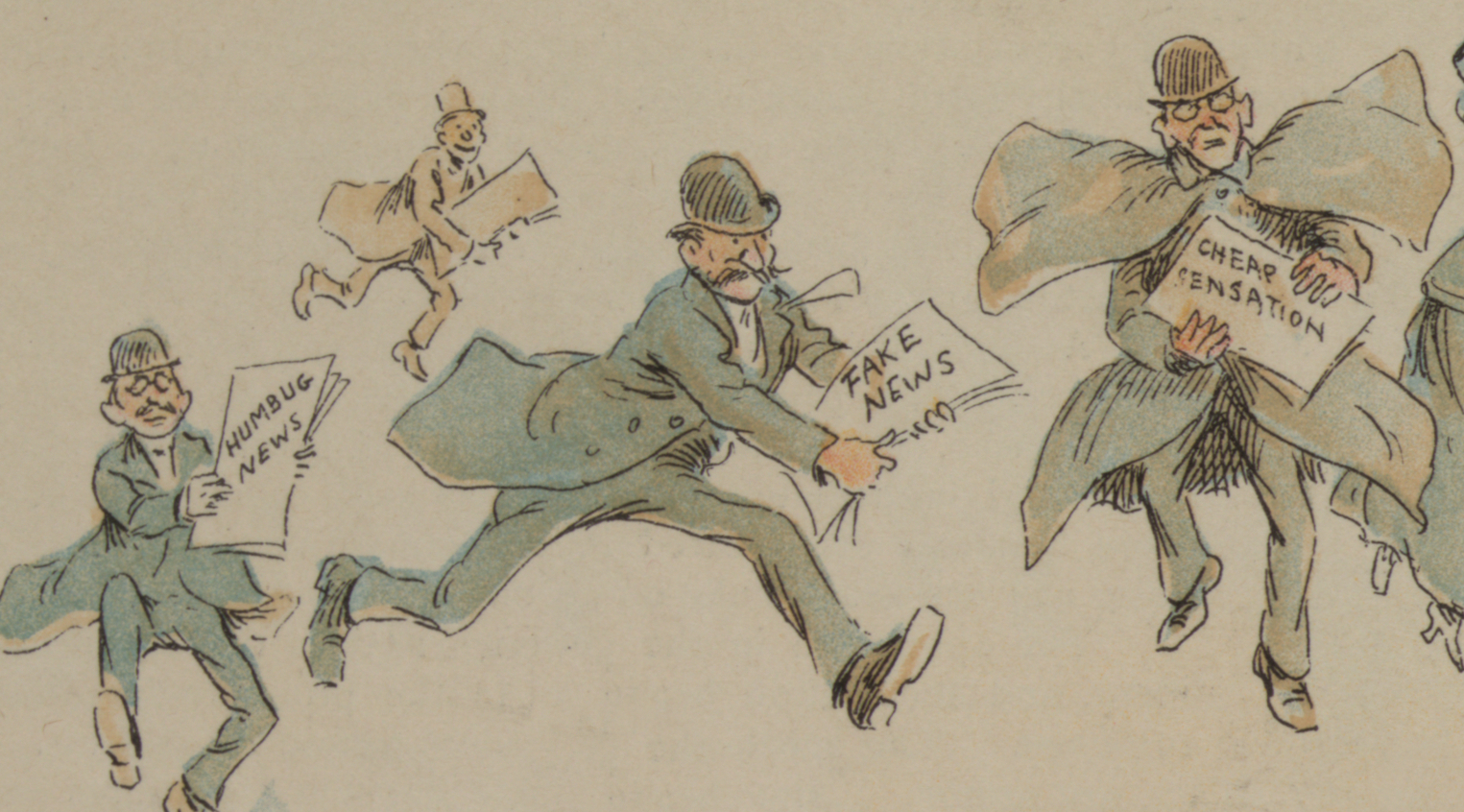The number of TV shows, news articles, and tweets talking about “fake news” each day is given below (for details on sources, see TV Archive, LexisNexis, and Twitter).

Overall trends
- The total numbers of shows, articles, and tweets per day vary significantly in scale by source. At the overall peak, there are over 200 television news shows talking about “fake news,” over 7,000 news articles, and over 100,000 tweets. Put differently, for every single TV show mentioning fake news at the peak, there are over 35 news articles, and over 500 tweets. The general volume of tweets is higher on most days, relative to other sources, but the reach of these different media also varies considerably, meaning that a single television show may be seen by many more people than most tweets on a given day (for further consideration of these media, see Media Literacy).
- Despite differences in scale, all three sources peak at the same time (around Jan 11, 2017), and exhibit similar increases and decreases over time. As we explore in more detailed analyses (see below), these tend to correlate with key events surrounding Donald Trump, the 2016 election, and the media.
- Twitter and, to a lesser extent, television news shows appear to be leading indicators of “fake news” discourse, peaking a day or two before news articles at any given time. This trend is perhaps unsurprising for social media, given the nature of platforms like Twitter, or even television news, which increasingly reports on social media discussions. However, as we note in more detailed analyses (see below), several events begin with a news article that breaks a particular story (e.g., The Washington Post reporting on investigations into Russian influence in the election on December 9, 2016), to which public figures react, leading to widespread discussion on social media, television news reporting, and eventually many more news articles about the topic.
Detailed analysis
Our analysis is broken down into five major time periods. These periods were selected after comparing the trends in “fake news” across our three data sources, as well as Google Trends. They align roughly with historical events that occurred between the 2016 Presidential Election and the transition of “fake news” to more apolitical subjects, and have been titled according to prominent quotes during each time period:
1. “A threat to democracy” (early November to early December)
2. “Ridiculous and untrue” (mid-December)
3. “You are fake news” (late December to mid-January)
4. “Opposition party” (mid-January to early February)
5. “Very fake news” (early February to early March)
For each time period, we summarize major topical trends and notable shifts in the use of the term “fake news” that occur during that time period. We also highlight individual points of interest in each of the data sources, as appropriate.
Broadly speaking, we observe a shift in the “fake news” discourse from the first two periods (during which “fake news” is applied as a descriptive term to particular stories) to the third and fourth periods (in which “fake news” becomes a performative term used to discredit entire sources) to the fifth and final period (when “fake news” appears in apolitical contexts in some sources).
